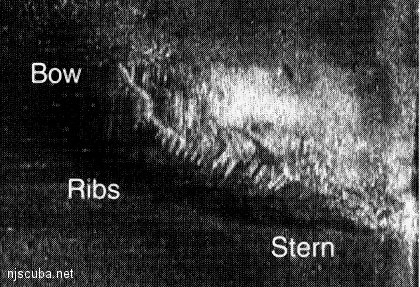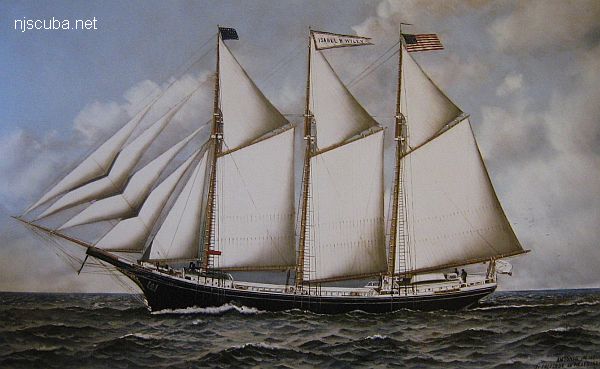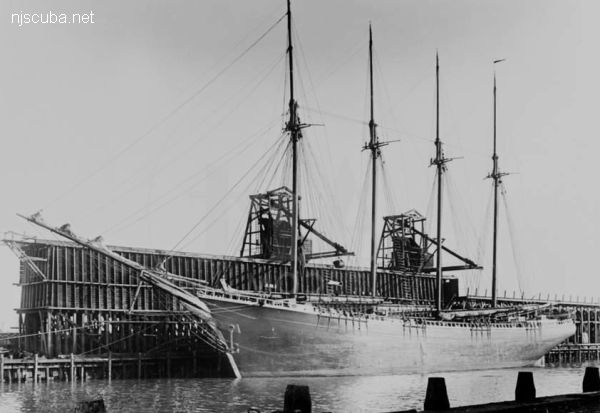side-scan sonar image
Type:
shipwreck, schooner
Sunk:
circa 1860; cause unknown
Depth:
35 ft
low wood debris field, bottles, coconut shells
More: Inshore Schooner ...
Type:
shipwreck, schooner
Depth:
105 ft
The Irma C , an old coal barge, rests a few miles east of the G&D wreck. Her remains have been reduced to a small low-lying patch of wreckage, so that fishing or dive boats may find it a little tricky to anchor on her.
More: Irma C ...
Type:
shipwreck, schooner , USA
Built:
1901, Cobb Butler & Co , Rockland ME USA
Specs:
( 226 x 43 ft ) 1778 gross tons
Sunk:
Sunday June 2, 1918
Depth: 200 ft
More: Jacob M Haskell ...
Type:
shipwreck, party boat
Specs:
( 47 ft ) 22 crew & passengers
Sunk:
Sunday Oct 24, 1982
Depth:
80 ft
probably nothing left but the engine, and that is probably buried
More: Joan LaRie III ...
Type:
shipwreck, schooner barge , USA
Built:
1892, Frank W. Wheeler & Co , West Bay City MI USA
Specs:
( 242 x 39 ft ) 1277 gross tons, 5 crew
Sunk:
Friday April 3, 1903
Depth:
130 ft
More: John C. Fitzpatrick ...






